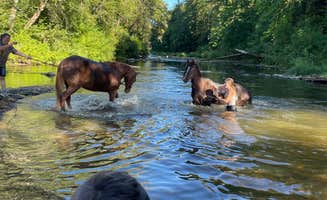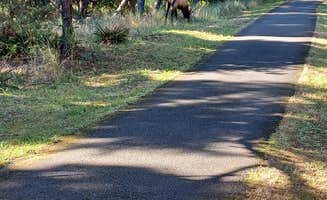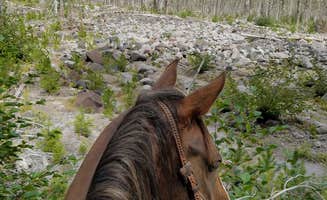L.L. Stub Stewart State Park, located 34 miles northwest of Portland, offers diverse camping options in the Coast Range foothills. The park encompasses 1,800 acres of second-growth forest at elevations ranging from 750 to 1,100 feet. Temperatures average 45-65°F in summer with frequent rain showers year-round, requiring campers to pack waterproof gear regardless of season.
What to do
Trail riding access: At Hares Canyon Horse Camp, riders can explore miles of trails directly from camp. "I don't have a horse but I still stayed here! We were in the area, struggling to find a place to camp. After 7 pm, the campground let us set up camp in an empty equestrian campsite," shares Cameron D., highlighting the camp's flexibility.
Mountain biking routes: The forest trails at L.L. Stub Stewart Memorial State Park offer technical riding for mountain bikers. "There are lots of hiking, biking, and horse trails. They even have a disc golf course within the park," notes MickandKarla W., who visited the Brooke Creek area.
Wildlife viewing: Forests around Vernonia provide opportunities to spot elk and other wildlife. "Seen a heard of elk on one of my hikes," reports Guy S. about trails near Camp Wilkerson, making it an excellent location for nature photography.
What campers like
Water features: Multiple creeks run through the wooded campgrounds near Vernonia. "The tent and two RV sites are on the first right turn and there is even a stream to play at," explains Schona K. about Camp Wilkerson, which features the Clatskanie River.
Trail connectivity: The Banks-Vernonia State Trail provides 21 miles of paved, multi-use pathways. "There is a two mile bike/walking path through the woods and along the bay," notes a camper at Nehalem Bay State Park, which has similar trail connectivity to Vernonia's pathways.
Seclusion factor: The remote location offers peace and quiet. "We had the campground to our self midweek. This is a wonderful campground far enough off the beaten path and being listed has a horse camp most likely keeps the crowds down," writes Dexter I. about Northrup Creek Horse Campground in nearby Clatsop State Forest.
What you should know
Bathroom facilities: Restroom quality varies significantly between locations. "The lower bathroom is old and needs updated. The showers are free but the water just sprays everywhere and you have to keep pushing the button for more water. The upper bathrooms are amazing and worth the walk near the horse camp," notes Schona K. about facilities at Camp Wilkerson.
Cell service limitations: Connectivity is restricted throughout the region. "Sprint and Verizon have no signal for sure and no Wi-fi is available," warns a Camp Wilkerson reviewer, making it important to download maps and information before arrival.
Weather considerations: The area receives significant rainfall, even in summer. "My husband and I have stayed here twice and both times it has rained. Which is fine but we find it very humorous (and actually really enjoy camping in the rain)," shares Jenny R. about camping at Dairy Creek East.
Tips for camping with families
Activity options: Multiple recreational facilities keep children engaged. "My kiddos absolutely loved the three pools, playground, and basketball hoops. Plenty to check out and explore for them," explains Corinna B. about bringing children to area campgrounds.
Tent site selection: Some campgrounds offer better privacy than others. "The tent camping area actually leaves a lot to be desired. The group camping areas have lean to that can accommodate many people in the bunks," advises Don H., suggesting families consider group sites.
Wildlife encounters: Prepare children for animal sightings. "When we came back from the shower my wife and I observed a dark shadow darting from the table around the back corner of the tent. Figured it was a raccoon or something. Half an hour later I went behind the tent to get a Pepsi, and there it was, a cat. A bobcat to be exact," recounts Patrick G. from Hares Canyon, highlighting the importance of wildlife awareness.
Tips from RVers
Site selection: Western loops typically offer more shade and privacy. "The Dairy Creek West loop has more shaded and privacy for most of the sites if thats what you are seeking, while the East loop is more open and affords a more social experience for those who like the chance to interact with their neighbors a bit more," advises Shane B.
Hookup considerations: Water pressure varies between parks. "The water pressure was not very good at around 35 psi," notes MickandKarla W. about their stay at Dairy Creek, suggesting RVers might need pressure regulators.
Satellite reception: Tree coverage affects connectivity for RVers using satellite services. "Our spot was on the north side of the road so when we put out our satellite unit it had lots of southern sky to find a signal from," shares Robert D., providing helpful information for RVers requiring television or internet service.






